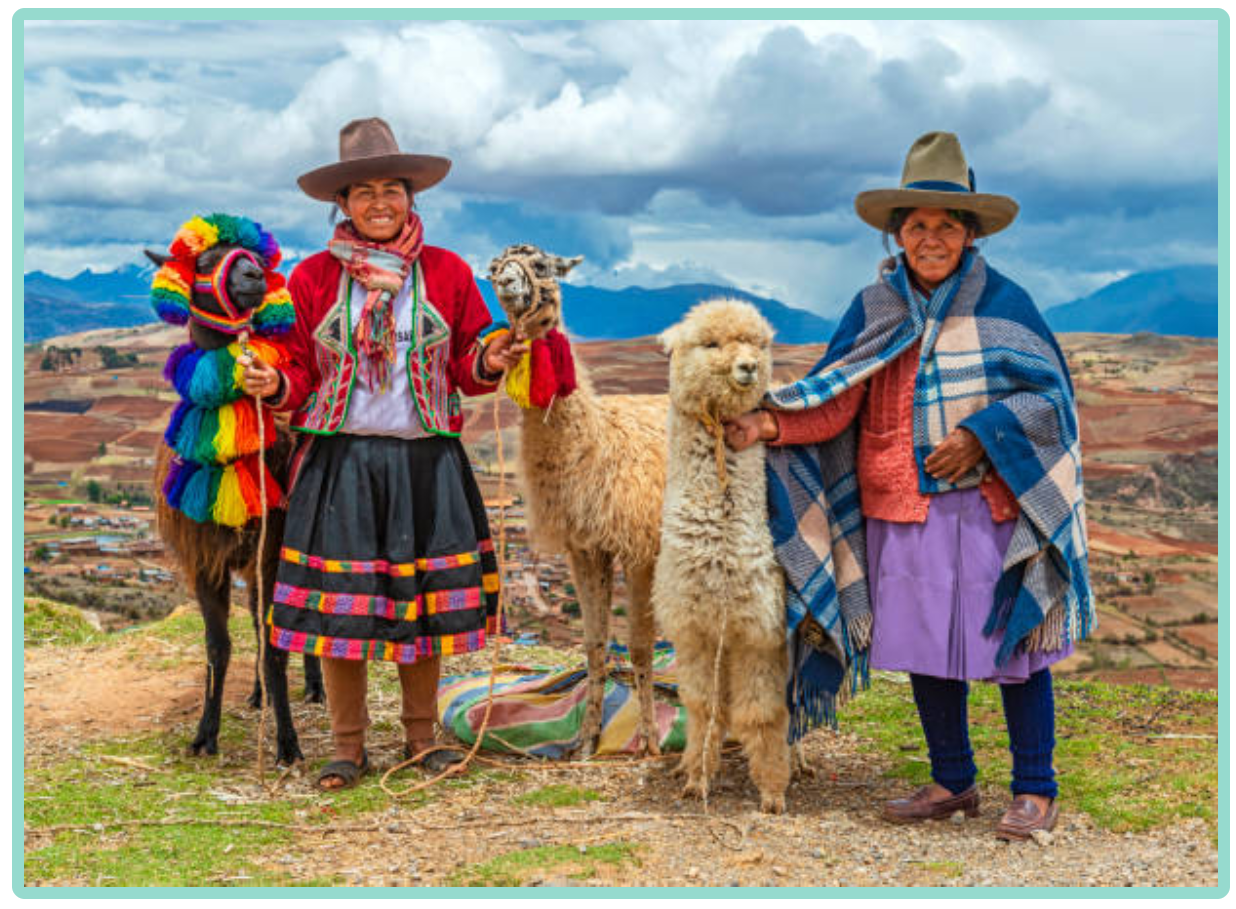 Archaeological evidence suggests that alpacas were domesticated first in the Puna highlands of central Peru about 6,000–7,000 years ago. Alpacas were first brought to lower elevations about 3,800 years ago.
Archaeological evidence suggests that alpacas were domesticated first in the Puna highlands of central Peru about 6,000–7,000 years ago. Alpacas were first brought to lower elevations about 3,800 years ago.
Alpacas are closely tied to cultural practices for Andeans people. Prior to colonization, the image of the alpaca was used in rituals and in their religious practices. In Inca mythology, the alpaca was seen as a gift from the goddess Pachamama, the earth/time mother. In modern times she is a benevolent and giving Mother Nature who presides over planting and harvesting, and embodies the mountains.
Alpacas were first bred by the Inca for their soft, strong fleece which is softer and silkier than sheep’s wool. It also doesn’t have lanolin, which makes the fiber hypoallergenic. There are about 20 natural colors of Alpaca, in varying shades of white, brown, black and gray. At Maui Alpaca Farm we use Hawaiian plants as dyes to create beautiful unique colors.
Alpacas are social creatures, gentle, intelligent, and extremely observant.
Alpacas may just be the cutest of all the Camelidae family, which includes llamas, guanacos and vicunas from South America, and Bactrian and Dromedary camels from Asia and Africa. With their floppy furry tufts, slender necks, ingénue eyes and coy Clara Bow grins, they are the “it” girls and boys of the ungulate world.
But beyond their charming, quirky good looks, these creatures are responsible for bearing some of the silkiest, most versatile fiber found in nature, for which they are shorn annually. Alpaca is a specialty fiber that has been described as stronger than mohair, finer than cashmere, smoother than silk, softer than cotton, warmer than goose down and better-breathing than thermal knits. Along with that, alpacas themselves possess some pretty remarkable personality traits.
There are two types of alpacas in this world…
Alpacas come in two types: Suri and the huacaya. The suri has fiber that grows long and forms silky dreadlocks. The huacaya has a wooly, dense, crimped fleece — like a teddy bear — giving it a very wooly appearance. About 90 percent of all alpacas in North America are huacayas.
Our Alpacas are currently all Suri, although we hope to add huacaya in the near future to have more fiber options.
They hum and haw… and orgle
Humming is the most common sound that alpacas make. Alpacas hum when they are curious, content, worried, bored, fearful, distressed or cautious. When startled or in danger, a staccato braying is started by one animal, then followed by the rest of the herd in the direction of the potential threat. During breeding, the male alpaca Romeo emits a unique throaty vocalization called “orgling.

